Search
To search for an exact match, type the word or phrase you want in quotation marks.
A*DESK has been offering since 2002 contents about criticism and contemporary art. A*DESK has become consolidated thanks to all those who have believed in the project, all those who have followed us, debating, participating and collaborating. Many people have collaborated with A*DESK, and continue to do so. Their efforts, knowledge and belief in the project are what make it grow internationally. At A*DESK we have also generated work for over one hundred professionals in culture, from small collaborations with reviews and classes, to more prolonged and intense collaborations.
At A*DESK we believe in the need for free and universal access to culture and knowledge. We want to carry on being independent, remaining open to more ideas and opinions. If you believe in A*DESK, we need your backing to be able to continue. You can now participate in the project by supporting it. You can choose how much you want to contribute to the project.
You can decide how much you want to bring to the project.
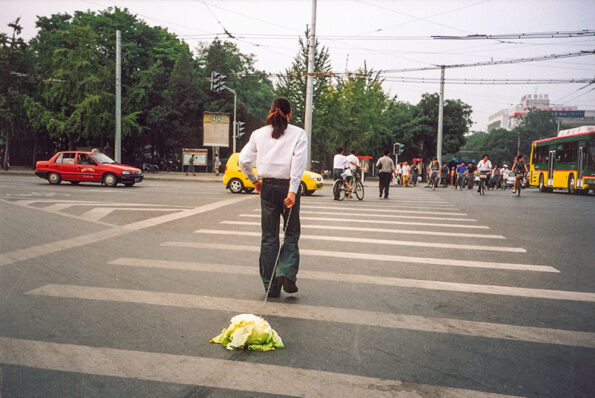
A man pushes a cabbage through a city; trembling as it rolls down the street, the walker moves with quiet deliberateness. From China to Portugal to Germany, this humble sustenance for the precarious takes many forms – from suan cai to sauerkraut. Han Bing‘s Walking the Cabbage has had many iterations, and this past Friday marked its debut in Berlin at the opening of the 13th Berlin Biennale: Passing the Fugitive On.
The impermanent, subversive gesture of taking this vital sustenance on a stroll establishes the tone for this year’s edition, where foxing and fugivity take centre stage. The concepts a means and method for “a work of art to set its own laws, in the face of lawful violence.” Such expressions – for any artistic gesture becomes one – find limited room in institutions, yet Passing the Fugitive On creates space and gives breath to what lies beyond the white cube.
Spanning the KW Institute for Contemporary Art, Sophiensæle, Hamburger Bahnhof, the Former Courthouse Lehrter Straße, and the Encounters program, the biennale presents lawlessness and transgression as evidence of resistance and survival, responses to systemic violence. Foxing, the practice of disappearance and evasion, encounters fugitivity, the refusal to accept barriers and instead embracing fluidity. Together, they appeal to what self-determination becomes when oppression permeates culture and society.
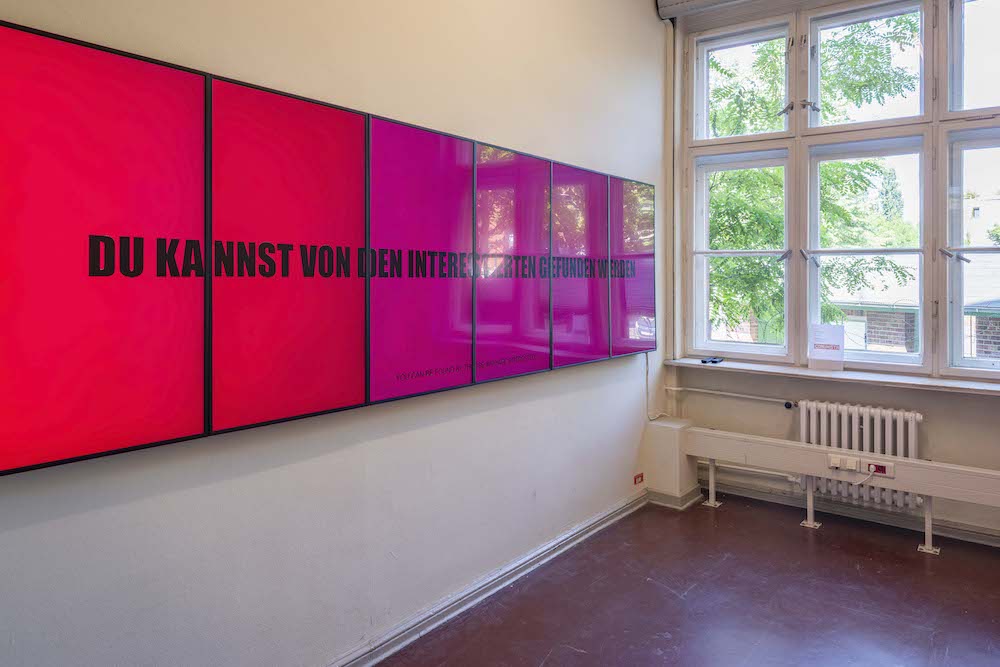
Anna Scalfi Eghenter, Die Komödie! [The comedy!], 2025 – 0.14 Büro / Clearing House [0.14 Office / Clearing House], 2025, installation view, 13th Berlin Biennale, Former Courthouse Lehrter Straße, 2025. Courtesy Anna Scalfi Eghenter. Photo: Marvin Systermans
This tension is overt at the Former Courthouse where flying facsimile Karl Liebknecht pamphlets flutter through space, landing on arms, legs, and faces. Anna Scalfi Eghenter‘s Die Komödie! (2025) spans the Former Courthouse’s opening rooms where authorities tried Liebknecht himself for treason for his 1916 pamphlet calling for an end to “the heinous crime of genocide.” Platoons of miniature toy soldiers lead the path to a war-room atmosphere. Walls covered with maps reveal the web of contemporary global neoliberal power structures. Drawing a historical line of defiance from the fall of the German Empire and Spartacus League to present-day struggles, the installation repeats the plea for workers to unite. In the final room, culminating with the word “COMUNISTA” in red, bold neon, facing the exterior, a reminder that unity is communal.
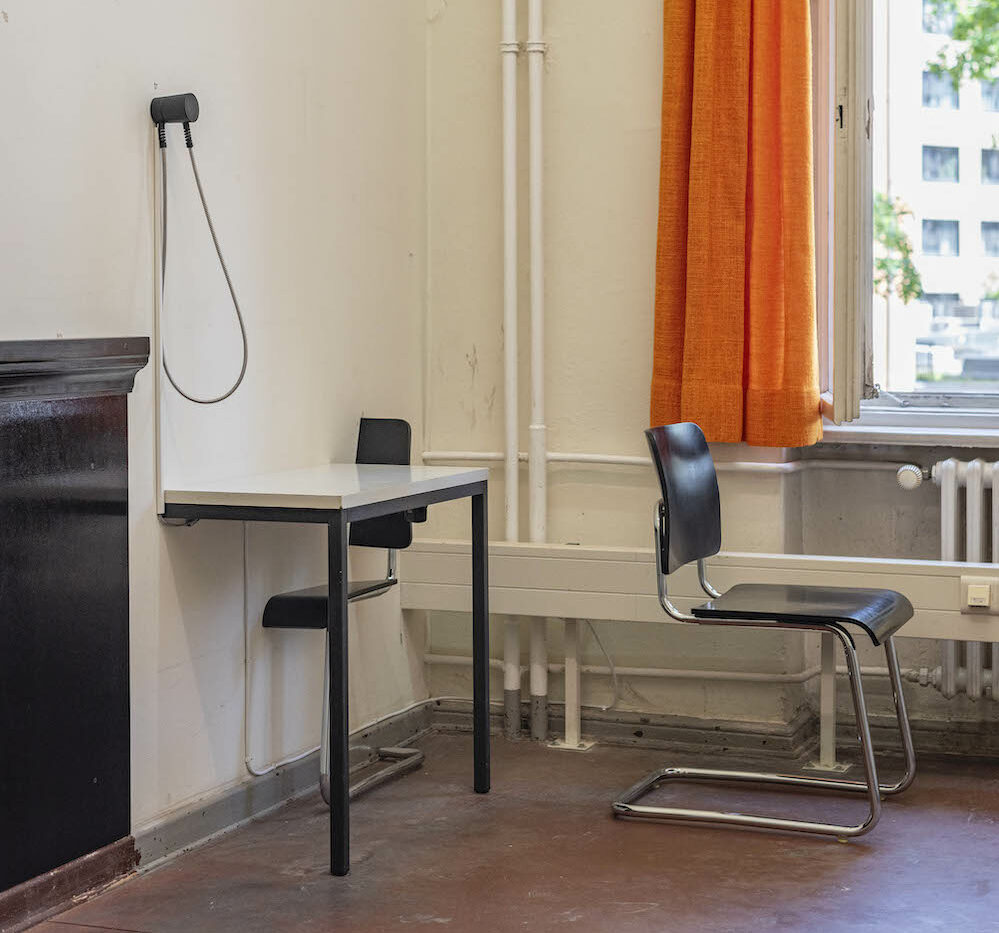
Merle Kröger, Was fehlt – Eksik olan – What’s missing, 2025, installation view, 13th Berlin Biennale, Former Courthouse Lehrter Straße, 2025. Courtesy Merle Kröger. Photo: Raisa Galofre
If Die Komödie! frames the courthouse as a symbolic theatrical stage for the so-called political “lawful” enforcement performance, Merle Kröger‘s audio installation exposes its violent consequences. In Was fehlt – Eksik olan – What’s missing (2025), the artist revisits the tragic case of Cemal Kemal Altun, a 23-year-old-Turkish activist, who died by suicide after jumping from a window of a court, following months of fighting an extradition order. Kröger reconstructs the political media context surrounding the case, narrowing in on the scandal that surrounded journalist Navina Sundaram, who broke the news to Altun’s family on camera. In mapping the erasure shrouding the case, it becomes conspicuous that bureaucratic systems govern not only geographical but also somatic and existential borders. Without forcing a conclusion, Kröger echoes Scalfi Eghenter in exposing the intrinsic brutality of bureaucracy – “or the rule of an intricate system of bureaus in which no men, neither one nor the best, neither the few nor the many, can be held responsible, and which could be properly called rule by Nobody.” (Hannah Arendt, On Violence[1]Arendt, Hannah. On Violence. A Harvest/HBJ Book ed., United States of America, Harcourt Brace Jovanovich, Publishers, p. 38.)
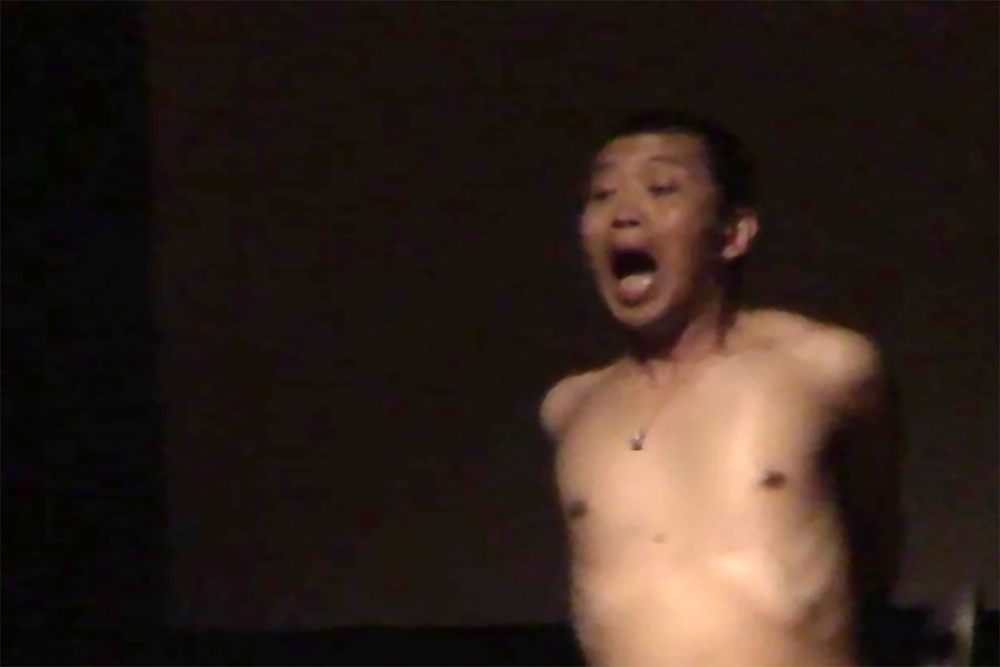
© Htein Lin, The Fly (Paris), 2008 (still). Video, color, sound, 15´02˝
Fugitivity in Somatic Transformation and Embodiment
While at the Former Courthouse each work serves as a witness to the arbitrariness of legality and illegality, at KW Htein Lin‘s The Fly (Paris) (2008) and Chaw Ei Thein‘s Scorched Fly (2023) stage fugitivity as a somatic act of escape. The videos, positioned in dialogue across the exhibition, mirror and converse with each other across time and circumstance.
Lin first performed the Fly for political prisoners in Myanmar while he was imprisoned. The visceral video shows a trapped body, disturbed by a lone buzzing fly, gradually becoming one being in choreographed synchrony until Lin catches and consumes the insect. After convulsing, the prisoner’s restrained movements become erratic and insectile. Fugivity emerges in a guttural transformation – internalized and transcendent of physical context. Ei Thein’s 2022 reenactment, following Lin’s imprisonment, functions as a reflection and continuation – the persistence of a collective act of escape, passing the fugitive on.

Anawana Haloba, Looking for Mukamusaba – An Experimental Opera, 2024/25, installation view, 13th Berlin Biennale, KW Institute for Contemporary Art, 2025. Courtesy Anawana Haloba, Sammlung / Collection Hartwig Art Foundation. Photo: Marvin Systermans
Opera has long stood as the sublime example of Gesamtkunstwerk, its tradition draped in opulence. Anawana Haloba reimagines this framework, creating an opera installation that resists “any a priori decision of what an artwork is, where it may take place, and under what conditions, but relying on its opacities, its illegibility, and taking our illiteracy as a starting point” (Zasha Colah, Premises). Her sonic installation Looking for Mukamusaba: An experimental opera (2024/25) reverberates in a musical dialogue:
Can someone hear me?
Are there any beings there?
My lungs are giving up.
I should make a pledge.
I should vow
I refuse to be born in this place
I refuse to be reborn in this place
The voices emanate from a series of acoustic sculptures throughout the room, weaving together oral histories, protest songs, and spiritual traditions, conscious they may not be understood but making themselves heard nonetheless, refusing legibility in favor of resonance. In doing so, echoing the biennale’s larger refusal to accept inherited frames of visibility and legality, the overused terms “minority” and “Indigenous” are used. The entangled voices form a monumental chorus, affirming that antagonism, too, can be tonal, affective, and dispersed.
Passing the Fugitive On offers a foxing glimpse into what art in vulnerable dialogue can represent. It traces acts of resistance that unsettle inherited systems, proving that art can be an indispensable mode of expression for enduring systemic violence – through metamorphosis, communion, and historical narrative rewriting. Yet, the ambitious scope of the biennale reveals an all-too-familiar limitation in German cultural programming, as certain voices remain underrepresented. And still, Han Bing’s cabbage rolls on – trembling but in motion, with quiet resolve.
(Featured image: Han Bing, Walking the Cabbage in Beijing, 2004. Courtesy Han Bing)
| ↑1 | Arendt, Hannah. On Violence. A Harvest/HBJ Book ed., United States of America, Harcourt Brace Jovanovich, Publishers, p. 38. |
|---|
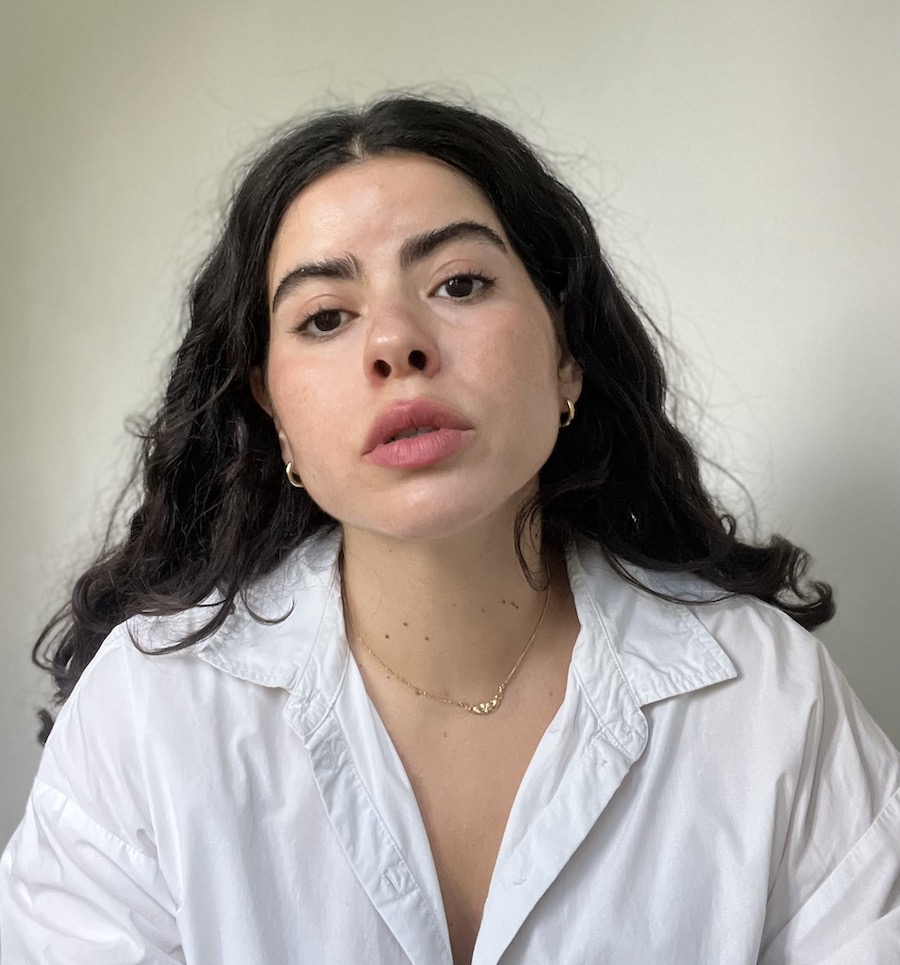
"A desk is a dangerous place from which to watch the world" (John Le Carré)